Out of an abundance of caution for the safety of our visitors and staff, the museum will be closing at 3 pm on December 24 due to the impending storms. The museum will be closed Thursday, December 25 for the Christmas holiday. We will reopen Friday, December 26.
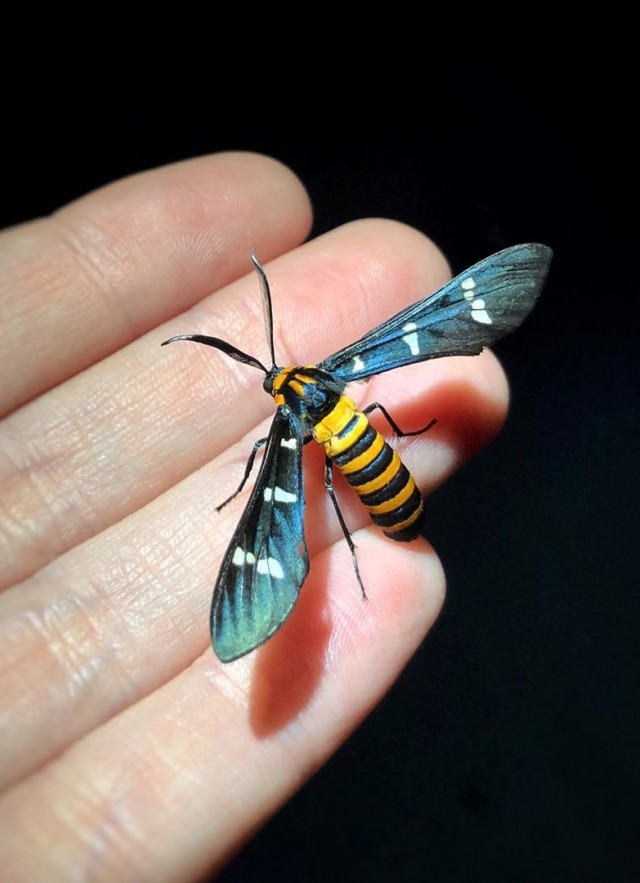
Don’t let physical distancing get you down! There are ways to destress and responsibly connect with nature during these trying times. You can still participate in community science happening at the Natural History Museum of Los Angeles County while at the comfort of your own home.
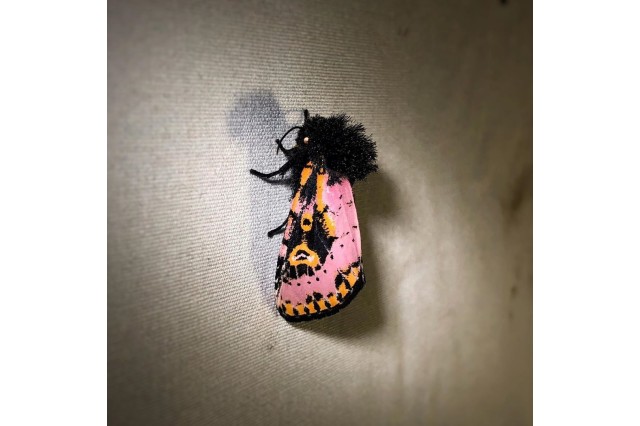
Alex Israel
Spanish moth (Xanthopastis regnatrix), Florida.
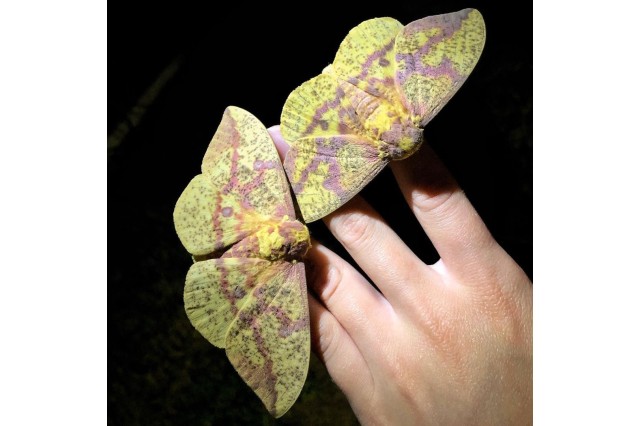
Alex Israel
Pine imperial moths (Eacles imperialis pini), Ontario
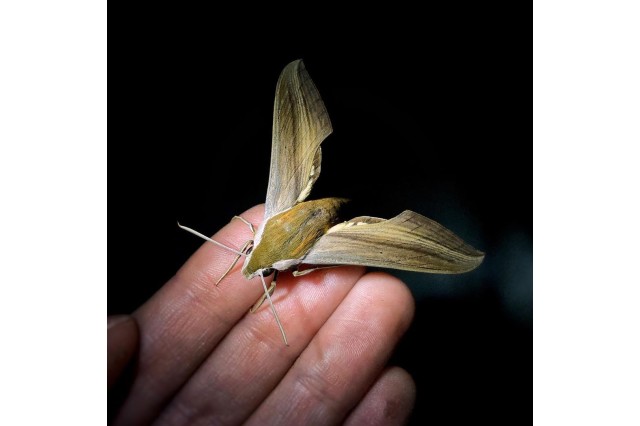
Alex Israel
Tersa sphinx (Xylophanes tersa), Florida.
1 of 1
Spanish moth (Xanthopastis regnatrix), Florida.
Alex Israel
Pine imperial moths (Eacles imperialis pini), Ontario
Alex Israel
Tersa sphinx (Xylophanes tersa), Florida.
Alex Israel
Go outside and identify moths! You can look for these fuzzy creatures at home using just a few supplies.
Community scientists can participate in a technique called “lightsheeting”. Lightsheeting — also known as “mothing” — entails setting up a light and providing a surface for moths and other flying insects to land on. You can lightsheet anytime the ambient temperature is above freezing, however, you’ll have better luck on warmer nights.
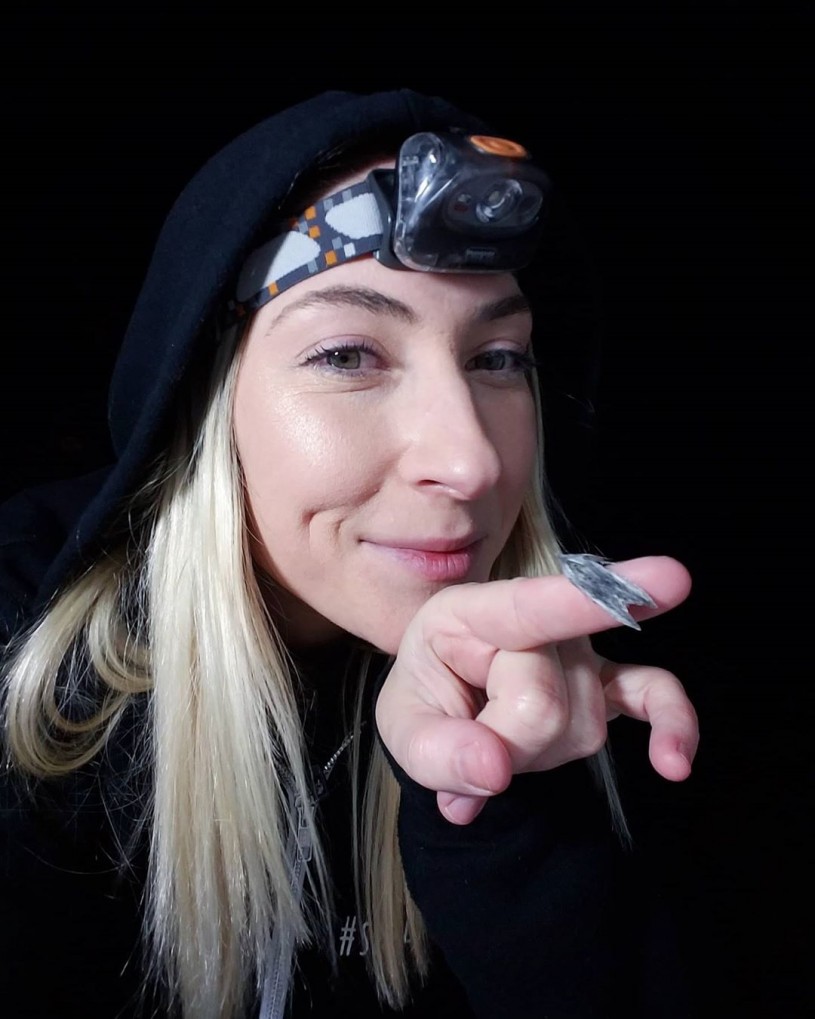
You can use any type of light that you already have at home, such as a CFL bulb, LED bulb, incandescent light bulb, mercury vapor lamp, or even the black UV light you occasionally bring out for Halloween. Mercury vapor lamps tend to be more effective at getting a broader range of unique moth species than when compared to other types of lights. But these setups can get pretty fancy and species-specific, so let’s keep this simple for our purposes!
First things first: Download iNaturalist and make a free account.
iNaturalist is free and available on Android and on the Apple Store. Using iNaturalist can not only help to identify your moth, but you’ll be sharing your observations with scientists around the world who may be studying these species. If you are in the Los Angeles area, add your observation to our L.A. Nature Map Project. Scientists at the Natural History Museum of Los Angeles County rely on this data for their ongoing research.
Once you make your account and upload your observation, community scientists and experts will help you to ID your species, so be sure to check back in on iNaturalist every now and then! If you’re not sure what the moth is, go with the broadest classification — “Butterflies and moths, Lepidoptera”.
If you are lightsheeting from home and prefer to keep your location private or obscured, you can adjust your privacy settings in the app. Keep in mind if you add your observations to any projects that the administrators of that project can see your address, but it is not shared with the broader community.
Here is what you'll need to set up a lightsheet:
🦋 white sheet or a white shirt on a hanger
🦋 stand for sheet or string to tie up the sheet (remember to not tie or suspend your sheet on sensitive vegetation like Joshua Trees)
🦋 lights (CFL, LED, UV, incandescent, and/or mercury vapor)
🦋 1 tall light stand to attract moths to the area
🦋 1 shorter light stand to direct moths to the sheet
🦋 sandbags
🦋 headlamp or flashlight
🦋 phone or digital camera
Optional:
🦋 field guide
🦋 magnifying glass and/or clip-on macro lens for your phone
🦋 notebook to write down your field observations. Here is some good information to record:
- ambient temperature (you can get this on your phone or by googling the weather in your area)
- GPS location (you can get this from your phone)
- drawing of the species, highlighting unique features, and
- anything else you'd like to record
When I first got into lightsheeting I was blown away at all of the beautiful moths that were in my neighborhood flying around at night largely unnoticed. For me, picking up a new hobby can be intimidating, especially when I’m not an expert in the topic. From day one I found it fun and challenging to identify moths that visit my sheet. Sometimes they don’t look like moths at all. For example, this moth appears to be a wasp, but it is actually a yellow-banded wasp moth (Syntomeida ipomoeae).
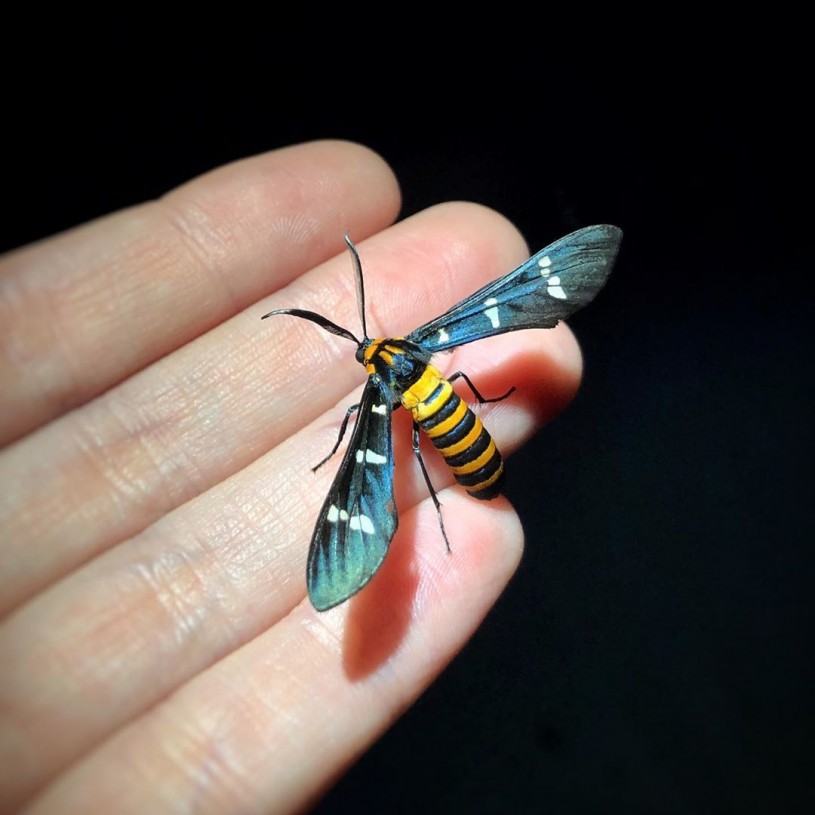
I was initially overwhelmed with having to identify all of the moths on my sheet. However, when I uploaded my observations to iNaturalist, the artificial intelligence feature helped with the identification, which makes it a lot easier!
If you don’t have access to a power outlet, you can also have a portable set up like moth enthusiast Alex Israel. Alex brings a UV light in her car with her wherever she goes. It plugs right into the USB adapter in her vehicle — as easy as charging a cellphone. She stops along roads when on vacation or in the city, pitches the white sheet, turns on the UV light and her headlamp, and patiently waits for the moths to come.
Seeing Alex’s instagram actually inspired me to start learning about moths. When I asked her why she loves moths so much, she replied, “They’re the butterflies of the night. When the bees and butterflies go to sleep, moths take over and continue to pollinate our flowers under the cover of darkness. Sure, many moths are tiny, brown and boring... but there are over 9 times more moth species than butterfly species in the world! And many of these moths are brilliantly colored: some are green, purple, red, yellow. I think you’d be surprised with how colorful moths can be! Even if you look a bit closer at the ‘boring brown moths’, you’ll see that they have beautiful, intricate patterns on their wings.”
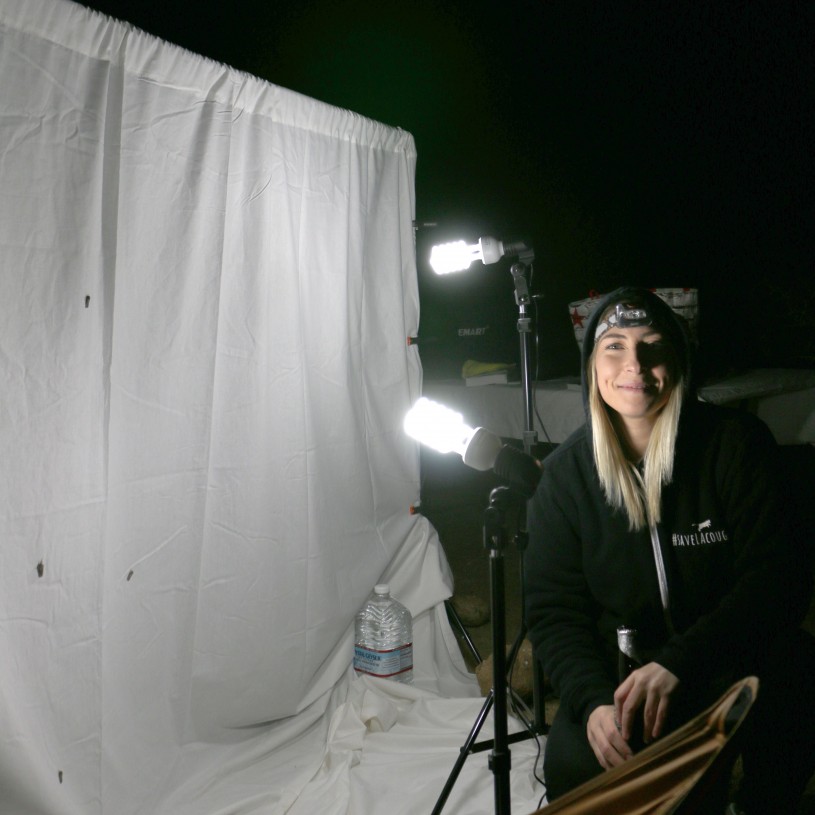
While I don’t endorse any specific brands, here are links to the products that I personally bought on Amazon for my set up:
- Sheet Stand, Clips, & Sandbags - $40
- White Muslin Sheet, with pre-stiched loop - $25
- National Wildlife Federation Field Guide to Insects and Spiders $10
For more information, you can also check out Science Friday’s article, Go Mothing!.